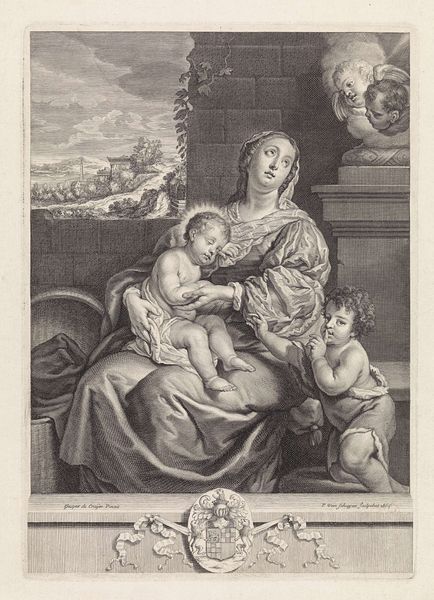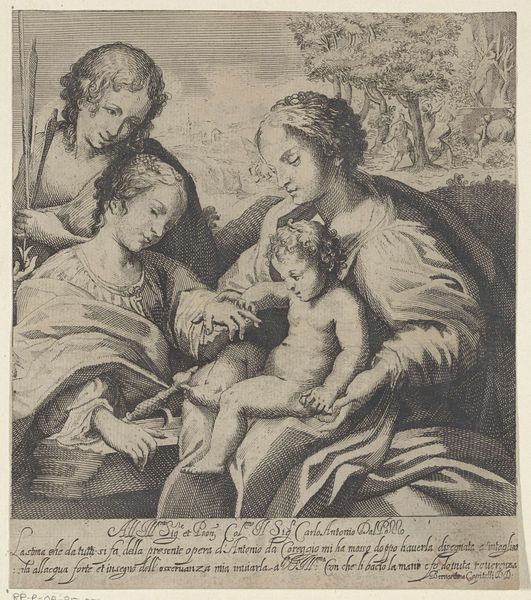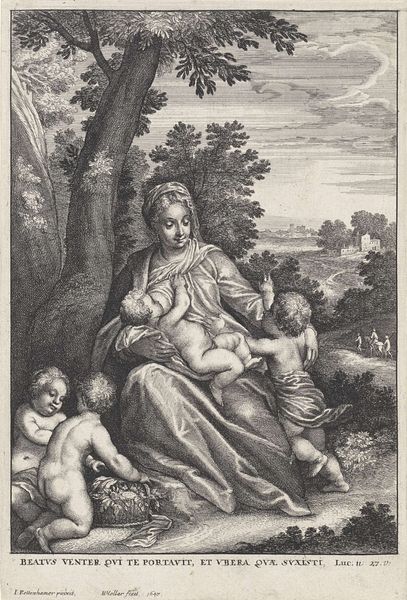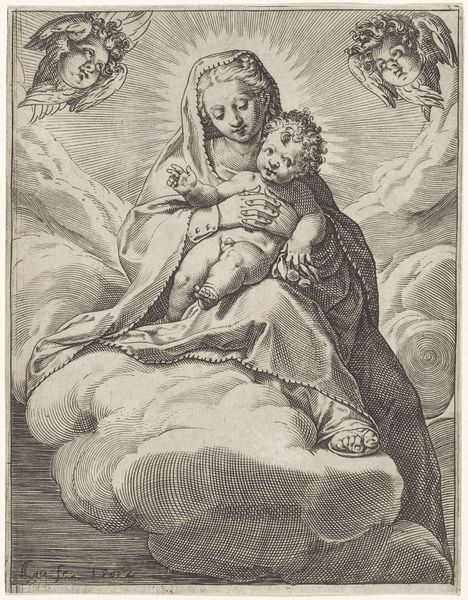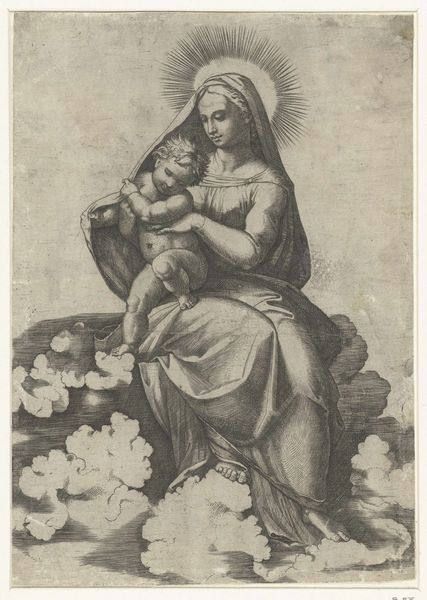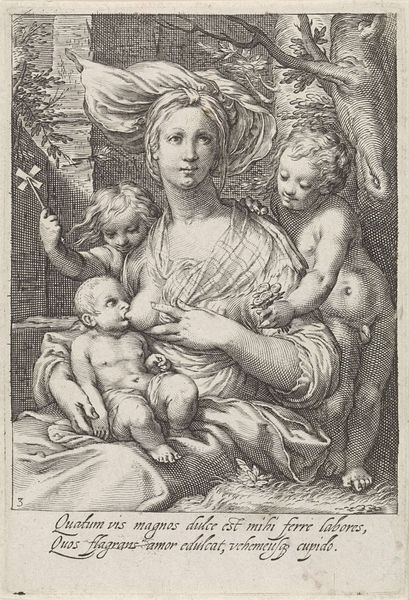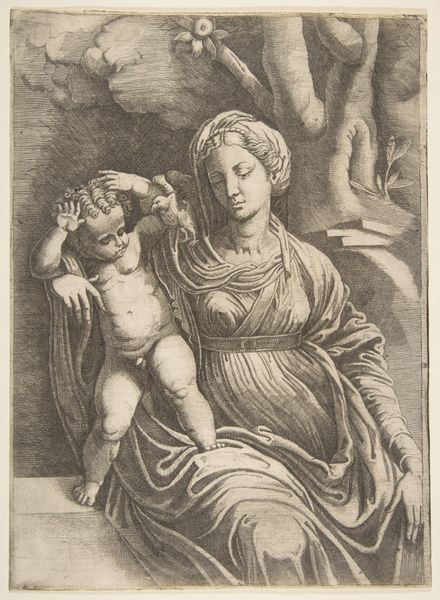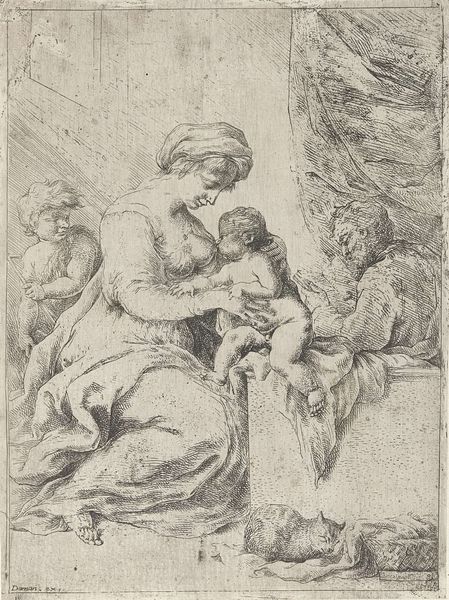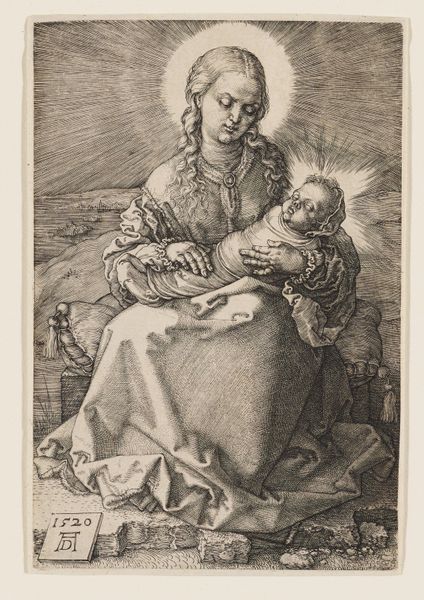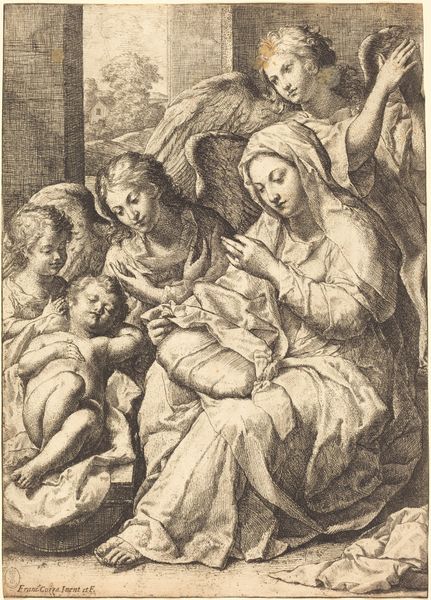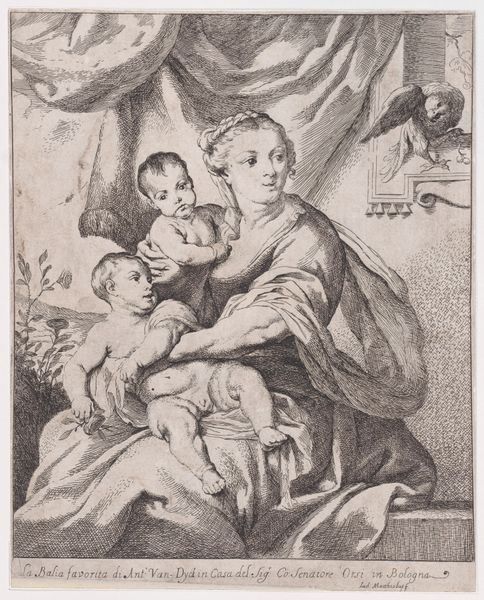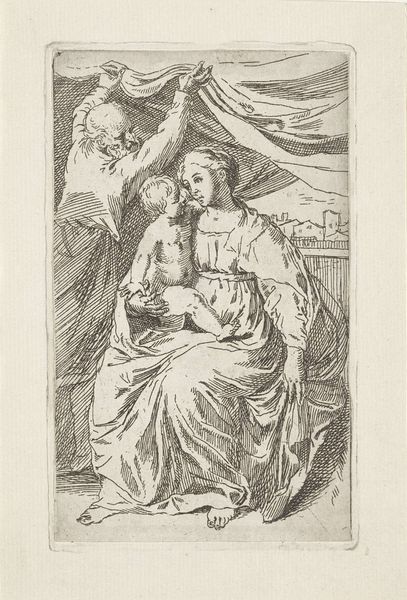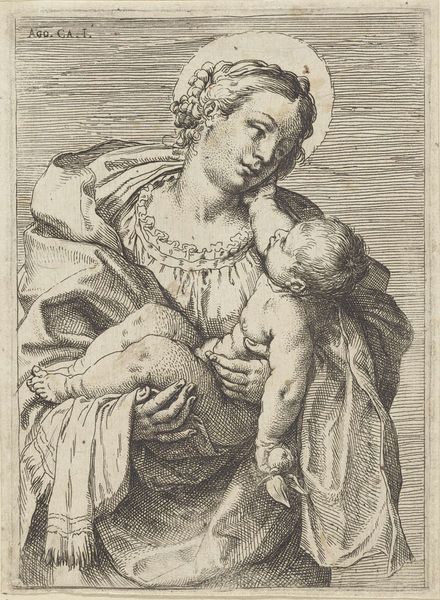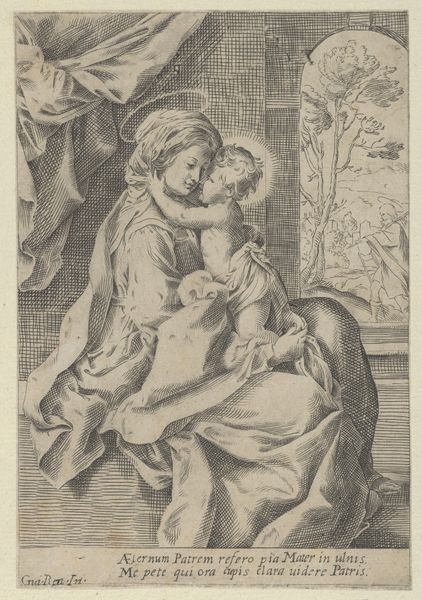
print, engraving
#
portrait
#
pencil drawn
#
baroque
# print
#
pencil sketch
#
landscape
#
portrait drawing
#
genre-painting
#
history-painting
#
engraving
Dimensions: height 286 mm, width 213 mm
Copyright: Rijks Museum: Open Domain
Curator: Oh, there’s a feeling of quietude here, isn't there? A gentle hum almost. Editor: Yes, the atmosphere is certainly contemplative. What we're looking at is Richard Collin's engraving "Madonna met slapend Kind en Johannes de Doper," created sometime between 1678 and 1797. A very busy time for printmakers, let me tell you. Curator: "Quietude" feels apt when you see how the infant Christ is nestled in Mary’s lap, fast asleep, while John the Baptist gestures for silence. There's a whole story being told with posture alone. It makes me think about the secret world of motherhood. Editor: Absolutely, and what interests me, seeing this engraving, is imagining the engraver meticulously using burins and other tools to transfer this image onto a copper plate. Then inking, wiping, pressing – it's a labor-intensive process. Consider the printmaking workshops churning these out—a whole industry dedicated to reproducing and disseminating these images. Curator: Did such engravings give more people access to religious iconography who wouldn’t have been able to see grand oil paintings in churches? It would be the equivalent of sharing beautiful holy cards today, I suppose. Editor: Exactly! Prints democratized images. They entered homes and offered an intimacy with religious figures not otherwise attainable for most people. Think about the socio-economic implications: devotional imagery as commodity. And that's Collin’s achievement here: participation in, and subtle commentary on, religious manufacture. Curator: It makes me reflect upon art's accessibility and reach over time. "Madonna met slapend Kind en Johannes de Doper" transcends just religious iconography and reminds us about human connection through the touch of material process and imagination. Editor: Indeed. Engravings like these prompt us to think not just about the image, but about its production, distribution, and impact on society. A convergence of the sacred, and the profoundly practical.
Comments
No comments
Be the first to comment and join the conversation on the ultimate creative platform.
